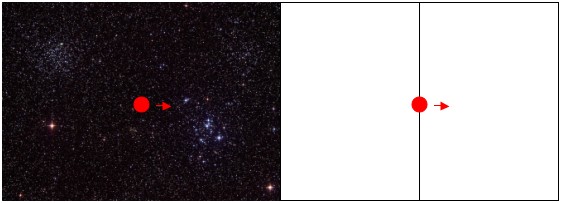Physicist: From a classical (Newtonian) view point this is a completely solid question. However, in the context of special relativity the question itself is (unfortunately) non-sense. For many practical purposes, the speed of light (hereafter I’ll call it “C”) is “infinitely fast”. If you define infinitely fast as the speed you’ll be going if you accelerate forever, then C is exactly that.
Normally when you want to figure out “the behavior at infinity” you can “take a limit”. For example; the limit as x goes to infinity of 1/x is 0. This statement just means that as x gets bigger and bigger 1/x gets closer and closer to zero. So by looking at the behavior at larger and larger finite values you can talk about what happens at infinity. C, on the other hand, is fundamentally different from all other speeds.
At a basic level, speed is just distance traveled over time taken (as in “miles per hour”). Due to the laws of special relativity, movement affects both the relative distances and relative time between two reference frames.
As a quick aside, a “reference frame” is just the set of all things that are moving at the same speed or, equivalently, are stationary with respect to each other. So if you’re traveling down the highway you’re in the same frame as all the other cars around you (if everyone’s going the same speed), while the repair teams and clean-up crews on the shoulder are in a different reference frame.
It may seem silly to say it, but no matter how fast you move you still see things passing by, and it still takes at least a little time to get where you’re going. At C however, the distance to your destination is always zero due to length contraction, while the time it takes to get there is also zero due to time dilation. If you were to calculate your own speed you would say , which makes no damn sense. I mean, what is that?
Also, consider this: at any other speed you can speed up or slow down, but at C you genuinely don’t have time to step on the brakes or the gas. Literally, “time” and “distance” are phenomena that only make sense if you’re talking about them at speeds slower than C. Stuff in the universe is divided into two categories: “massive” and “massless”. Massive objects (anything with mass) always travel slower than C, while massless things must travel at C.
All that being said, you can wave your hands and talk about what life is like for a photon, that can’t exist at sub-light speeds (after all, what speed would you expect light to move at?). When a photon is generated it immediately takes off at C, and never slows down until it runs into something. Photons never experience time or distance. As far as they’re concerned they are emitted and absorbed at the same place and time. Many of the radio photons hitting you right now (about a third of them), have been traveling for around 15 billion years, but they think that the beginning of the universe just happened (or would, if they could think).








Pingback: Q: Why is the speed of light finite? « Ask a Mathematician / Ask a Physicist